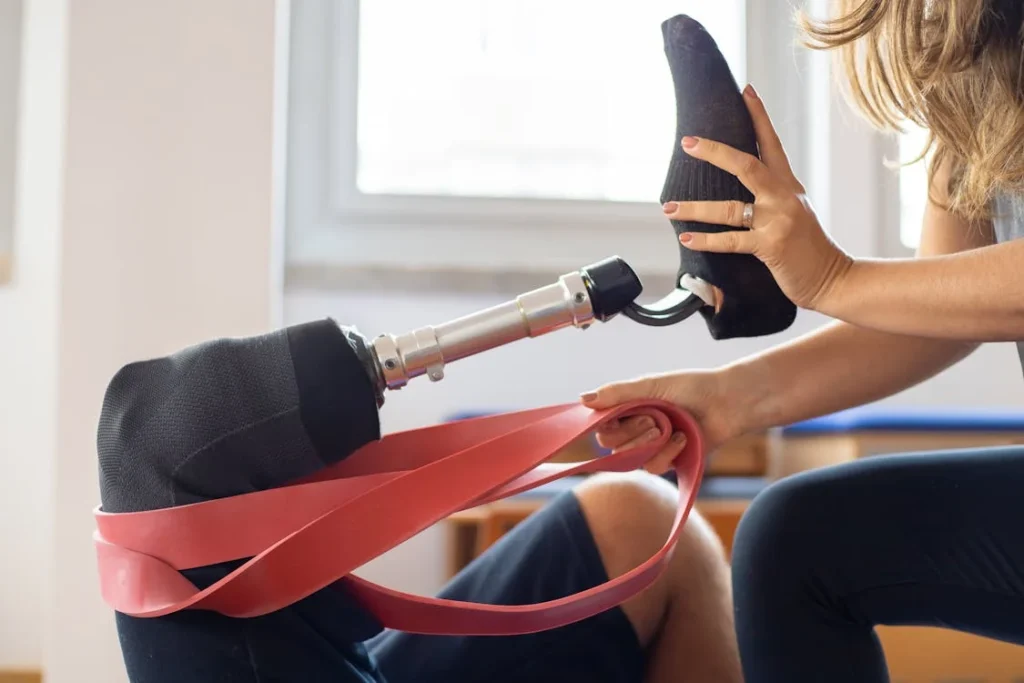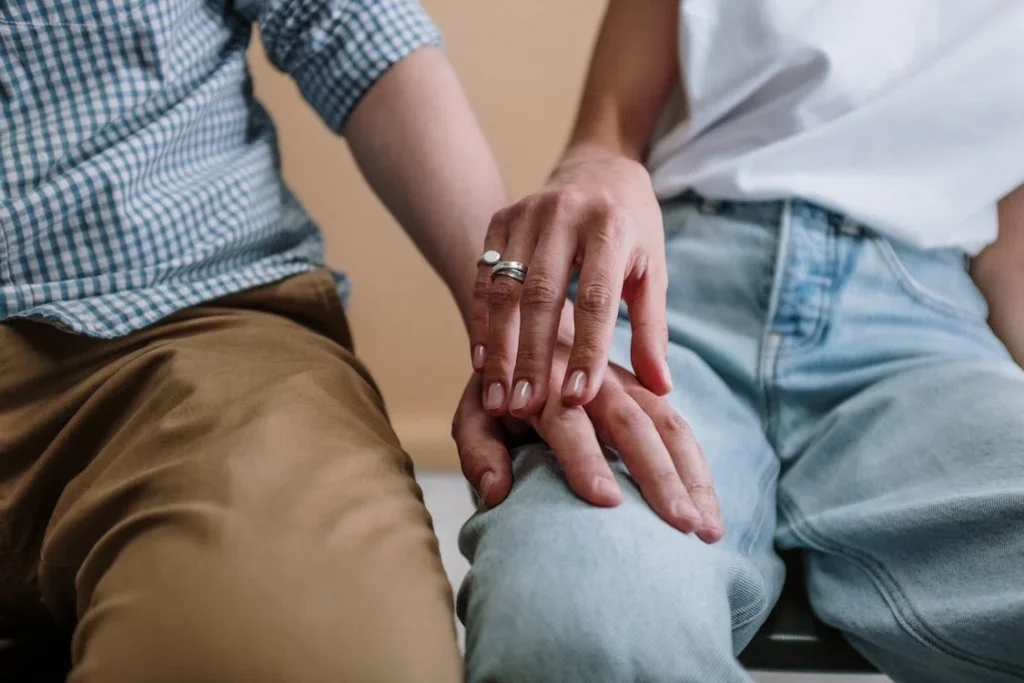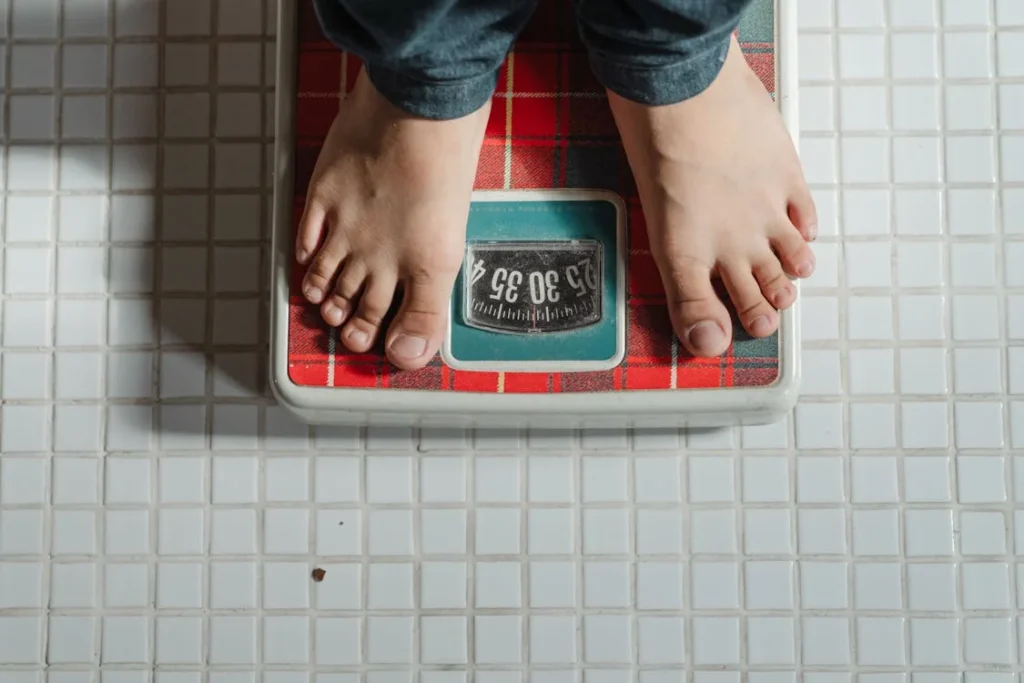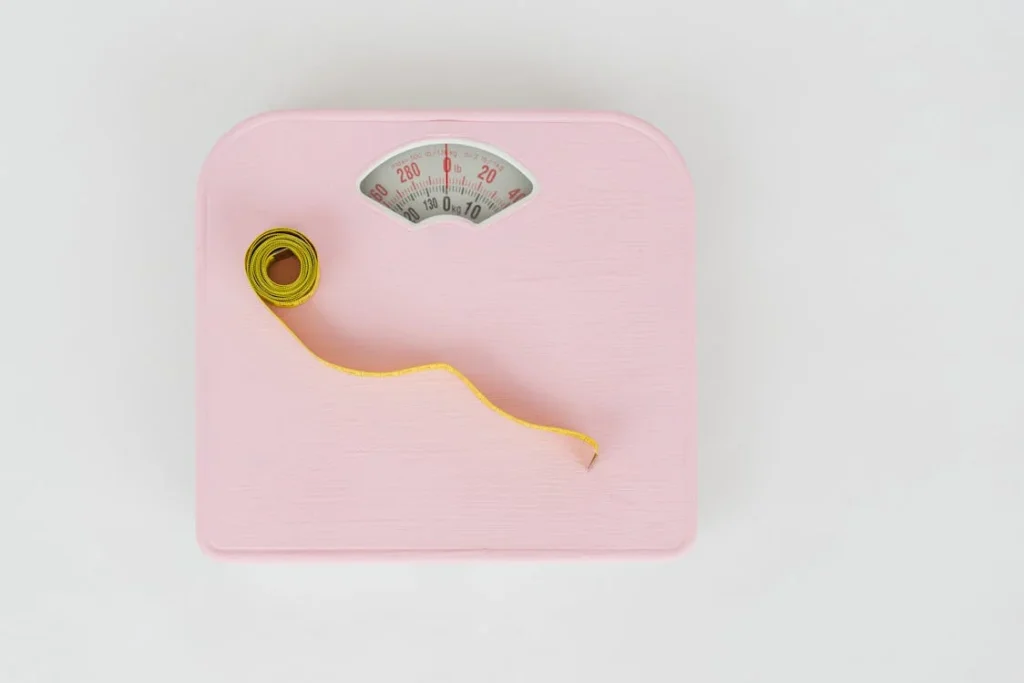Losing a limb brings many physical and emotional changes, and one of the biggest challenges can be maintaining a healthy weight. The body adapts to a new way of moving, and activity levels often change. Some people gain weight due to reduced movement, while others lose weight because of stress, muscle loss, or changes in metabolism. A balanced weight is important for overall health, prosthetic comfort, and mobility.
Staying at a healthy weight helps prevent joint pain, improves energy levels, and makes using a prosthetic limb easier. It also reduces the risk of other health problems like diabetes and heart disease, which can be harder to manage after an amputation. While weight management can feel overwhelming, simple lifestyle adjustments can make a big difference.

Understanding How Limb Loss Affects Weight
After an amputation, the body goes through several adjustments that can impact weight. The amount of energy the body needs changes, and movement patterns shift, affecting how many calories are burned each day.
Many amputees notice weight fluctuations in the months following their surgery, and understanding why these changes happen is the first step to managing them effectively.
Changes in Metabolism and Calorie Needs
One of the biggest factors influencing weight after limb loss is metabolism. The body’s metabolism controls how many calories are burned at rest and during activity.
When a limb is lost, the total muscle mass in the body decreases, which can slightly lower the metabolism. This means the body may not need as many calories as before, making it easier to gain weight if eating habits remain the same.
However, this change is not the same for everyone. For many amputees, using a prosthetic limb or adapting to new movement patterns actually increases energy needs.
Walking with a prosthetic requires more effort than walking with natural limbs, especially in the early stages of rehabilitation. The body works harder to balance, engage stabilizing muscles, and maintain proper posture.
This can lead to increased calorie burn, particularly for those using a lower-limb prosthesis.
Muscle Loss and Body Composition
Another major change after limb loss is the shift in body composition. Muscle plays a key role in burning calories and maintaining a stable weight.
After an amputation, the muscles in the residual limb may become weaker due to reduced use. Additionally, the muscles on the opposite side of the body often work harder to compensate for the missing limb, leading to imbalances.
If muscle mass decreases significantly, overall strength and stability can be affected. This can make daily movements more difficult and increase the risk of gaining excess fat.
Strength training and regular movement can help rebuild muscle, improving metabolism and making weight management easier.
Emotional and Psychological Factors
Weight changes after limb loss are not just physical—they are also influenced by emotions and mental well-being. Many amputees experience stress, anxiety, or depression during the adjustment period.
Emotional challenges can lead to changes in eating habits, such as overeating for comfort or skipping meals due to loss of appetite. Stress hormones can also contribute to weight gain, especially in the form of abdominal fat.
In addition to emotional eating, motivation for physical activity can decrease after an amputation. Fear of injury, discomfort, or uncertainty about new movement patterns may make it harder to stay active.
However, regular movement is essential for maintaining a healthy weight and overall well-being. Finding enjoyable and accessible forms of exercise can help overcome these challenges.
Understanding these physical and emotional changes is important for creating a weight management plan that works.
By focusing on balanced eating, mindful movement, and emotional well-being, it is possible to maintain a healthy weight and feel stronger after an amputation.

Creating a Balanced Diet for Healthy Weight Management
Maintaining a healthy weight after limb loss starts with nutrition. What you eat directly affects your energy levels, muscle strength, and overall well-being.
A well-balanced diet provides the body with the fuel it needs to function properly while preventing unnecessary weight gain or loss. The goal is to create a sustainable way of eating that supports healing, mobility, and long-term health.
Understanding Portion Control and Caloric Needs
After an amputation, the body’s energy needs change, but that doesn’t mean eating less is always the solution. Instead of focusing on strict calorie counting, it’s more effective to pay attention to portion sizes and nutrient balance.
Eating the right amount of food based on activity levels, prosthetic use, and individual metabolism helps prevent unwanted weight fluctuations.
Portion control plays a key role in managing weight. It’s easy to overeat when meals are unbalanced or when processed foods are a major part of the diet. Whole, nutrient-dense foods help regulate hunger and keep energy levels stable.
Eating meals that include a mix of protein, healthy fats, and complex carbohydrates ensures steady energy without sudden spikes or crashes.
Choosing Nutrient-Dense Foods Over Empty Calories
Not all calories are equal. Foods rich in essential nutrients help the body heal, maintain strength, and keep inflammation under control.
On the other hand, processed foods high in sugar, unhealthy fats, and artificial ingredients provide little nutritional value and often lead to weight gain.
Protein is especially important for amputees as it helps rebuild muscle and supports tissue repair. Lean sources such as chicken, fish, eggs, lentils, and dairy provide the necessary building blocks for strength and recovery.
Healthy fats from sources like nuts, seeds, avocados, and olive oil support joint health and brain function. Whole grains, fruits, and vegetables provide fiber, vitamins, and antioxidants that help regulate digestion and reduce inflammation.
Sugary snacks, fried foods, and processed meals can slow down metabolism and increase fat storage. Instead of cutting out favorite foods completely, finding healthier alternatives can make a long-term diet plan more enjoyable.
Swapping soda for infused water, choosing whole grains over refined flour, and replacing packaged snacks with nuts or yogurt are simple ways to improve food choices without feeling deprived.
Staying Hydrated to Support Weight Management
Drinking enough water is often overlooked but plays a significant role in maintaining a healthy weight. Proper hydration helps regulate appetite, improve digestion, and prevent unnecessary cravings.
Sometimes, the body confuses thirst for hunger, leading to overeating when a glass of water would have been enough.
Herbal teas, fresh fruit juices without added sugar, and water-rich foods like cucumbers and watermelon help keep the body hydrated.
Avoiding excessive caffeine and alcohol prevents dehydration, which can slow down metabolism and lead to fatigue. A well-hydrated body functions better, making it easier to stay active and maintain a balanced weight.
By focusing on portion control, nutrient-dense foods, and proper hydration, amputees can create a diet that supports weight stability and overall health.
Combined with regular movement, these eating habits make it easier to maintain energy levels, prevent unwanted weight gain, and feel stronger every day.

Staying Active and Building Strength After Limb Loss
Physical activity is one of the most effective ways to maintain a healthy weight after an amputation. Movement helps burn calories, strengthen muscles, and improve overall well-being.
Many amputees worry about how to stay active after losing a limb, especially if they experience discomfort, balance issues, or a lack of motivation. However, with the right approach, exercise can become an enjoyable and beneficial part of daily life.
Adapting to a New Way of Moving
After limb loss, the body must adjust to new movement patterns. This can be challenging at first, especially for those who were highly active before their amputation.
The key is to focus on gradual progress rather than trying to do too much at once. The muscles that remain must take on extra work, and overexertion can lead to fatigue or injury.
For those using a prosthetic limb, learning proper form and posture is essential. A well-fitted prosthesis should allow for comfortable movement, but it takes time for the body to adapt.
Working with a physical therapist can help develop safe and effective movement patterns. Even simple activities like standing up from a chair, shifting weight, or walking short distances can help rebuild strength and improve mobility.
Finding the Right Type of Exercise
Not all exercises require high-impact movement or intense physical effort. Low-impact activities can be just as effective for maintaining weight and improving fitness.
Swimming is an excellent option, as it provides resistance for muscle strengthening while reducing stress on the joints. Water also helps with balance, making it easier to move freely.
Seated exercises can also be useful for those who are still adjusting to a prosthetic limb or have limited mobility. Chair yoga, resistance band workouts, and core exercises help improve flexibility, strength, and posture.
These exercises also improve circulation, reducing the risk of swelling or discomfort in the residual limb.
For those who feel confident on their prosthetic limb, walking is one of the best ways to stay active. Walking not only burns calories but also strengthens the muscles needed for balance and coordination.
Over time, as endurance improves, adding slight inclines or longer distances can make walking even more beneficial.
Strength Training for Better Mobility
Muscle strength plays a major role in maintaining a stable weight after limb loss. The stronger the muscles, the more efficiently the body burns calories and supports movement.
Strength training helps rebuild lost muscle, improves stability, and reduces the risk of injury.
Focusing on core strength is especially important, as the abdominal and back muscles support posture and balance. Weak core muscles can lead to poor posture, which may cause discomfort when using a prosthetic limb.
Simple core exercises such as seated leg lifts, planks, or pelvic tilts can make a significant difference in improving stability.
Upper body strength is also essential, especially for those who rely on crutches or a wheelchair. Exercises that target the shoulders, arms, and chest help improve endurance and prevent strain on the joints.
Lifting light weights or using resistance bands can help build strength without putting too much pressure on the body.
Staying Consistent and Listening to the Body
The most important part of any fitness routine is consistency. Staying active regularly, even if it’s just for a few minutes a day, is more beneficial than occasional intense workouts. Setting realistic goals and tracking progress can help maintain motivation.
It’s also important to listen to the body and avoid pushing too hard. Some days may be more challenging than others, and rest is just as important as movement.
If pain or discomfort arises, adjusting the activity level or seeking guidance from a physical therapist can help prevent injury.
Regular physical activity, combined with a balanced diet, creates a strong foundation for maintaining a healthy weight after limb loss.
Exercise not only supports weight management but also improves overall strength, flexibility, and confidence. Making movement a part of daily life leads to long-term health benefits and greater independence.

Managing Emotional Well-Being to Support Healthy Weight
Weight management after limb loss is not just about diet and exercise. Emotional health plays a big role in how the body processes food, stores energy, and stays active.
Many amputees experience stress, anxiety, or frustration during their recovery, which can impact eating habits and motivation to stay active. Recognizing the connection between mental health and physical health is essential for maintaining a balanced weight and overall well-being.
Understanding the Impact of Stress on Weight
Stress affects the body in many ways, including how it stores fat and processes energy. When stress levels are high, the body releases cortisol, a hormone that increases appetite and encourages fat storage, especially around the abdomen.
This can make weight management more difficult, even with a healthy diet.
For some, stress leads to emotional eating, where food becomes a source of comfort rather than nourishment. This often results in eating high-calorie, processed foods that provide temporary relief but contribute to weight gain over time.
Others may experience a loss of appetite due to anxiety or depression, leading to unintentional weight loss and muscle depletion.
Finding healthy ways to manage stress is just as important as making smart food choices. Engaging in relaxation techniques such as deep breathing, meditation, or light stretching can help reduce stress levels.
Activities like journaling, listening to music, or talking to a trusted friend or therapist can also provide emotional relief.
Building a Positive Relationship with Food
Many people struggle with their relationship with food, especially after a major life change like limb loss. Food should be a source of nourishment and energy, not guilt or restriction.
Viewing eating as a way to fuel the body rather than an emotional response can make weight management more sustainable.
Practicing mindful eating can help develop a healthier relationship with food. This means paying attention to hunger and fullness cues, eating without distractions, and truly enjoying each meal.
Slowing down while eating allows the body to recognize when it has had enough, preventing overeating.
Focusing on variety and balance in meals rather than strict dieting can also make it easier to maintain a stable weight.
Instead of eliminating certain foods, it’s better to incorporate a mix of proteins, healthy fats, and whole grains while enjoying treats in moderation. The goal is to create a long-term way of eating that supports health without feeling restrictive.
Staying Motivated and Finding Support
Maintaining a healthy weight is easier with a strong support system. Connecting with others who have gone through similar experiences can provide encouragement and practical advice.
Support groups, whether in person or online, offer a sense of community and motivation to stay committed to healthy habits.
Setting small, achievable goals can also help maintain motivation. Celebrating progress, whether it’s increased mobility, improved energy levels, or better emotional well-being, reinforces the benefits of a healthy lifestyle.
Recognizing that setbacks are normal and learning from them instead of feeling discouraged is key to long-term success.
Taking care of emotional health creates a strong foundation for maintaining a balanced weight.
Managing stress, building a healthy relationship with food, and finding support all contribute to a positive mindset, making it easier to stay active, eat well, and feel good about the body’s abilities.

The Role of Sleep in Weight Management After Limb Loss
Sleep plays a vital role in maintaining a healthy weight, yet it is often overlooked. After limb loss, sleep patterns can change due to discomfort, phantom limb sensations, or stress.
Poor sleep quality affects metabolism, appetite regulation, and energy levels, making it harder to maintain a balanced weight. Prioritizing restful sleep can help the body recover, reduce cravings, and improve overall well-being.
How Sleep Affects Metabolism and Appetite
The body relies on sleep to regulate hormones that control hunger and energy use. When sleep is disrupted, two key hormones—ghrelin and leptin—become imbalanced.
Ghrelin, which signals hunger, increases when sleep is lacking, making people feel hungrier than usual. Leptin, which signals fullness, decreases, making it harder to recognize when the body has had enough food.
This combination leads to increased calorie intake and a higher risk of weight gain.
In addition to appetite control, sleep affects how efficiently the body burns calories. Poor sleep can slow down metabolism, meaning fewer calories are burned at rest.
This can be especially problematic for amputees, as changes in movement and activity levels already require careful weight management. Getting enough sleep allows the body to maintain a stable metabolism and use energy efficiently.
The Connection Between Sleep and Stress
Lack of sleep increases stress levels, which in turn affects weight. When the body is deprived of rest, cortisol levels rise, leading to higher cravings for sugary and high-fat foods.
These foods provide temporary energy but contribute to weight gain when consumed in excess. Chronic stress from poor sleep can also lead to emotional eating, where food becomes a coping mechanism for fatigue and frustration.
Phantom limb pain and discomfort can also make it difficult to get restful sleep. Finding a comfortable sleeping position, using supportive pillows, and maintaining a cool, dark environment can help improve sleep quality.
Relaxation techniques such as deep breathing, meditation, or gentle stretching before bed can also promote better rest.
Creating a Sleep Routine for Better Weight Control
Establishing a consistent sleep routine is one of the most effective ways to improve sleep quality. Going to bed and waking up at the same time each day helps regulate the body’s internal clock.
Reducing screen time before bed, avoiding caffeine in the evening, and creating a relaxing bedtime routine can signal to the body that it’s time to rest.
For amputees who experience nighttime discomfort, adjusting prosthetic use before sleep can make a difference. Some people find relief by removing their prosthetic early in the evening, while others benefit from wearing a soft liner to reduce sensitivity.
Finding what works best for individual comfort can lead to better sleep and more energy during the day.
Improving sleep habits not only helps with weight management but also supports overall recovery and emotional well-being. When the body is well-rested, it is easier to maintain a healthy lifestyle, stay active, and make better food choices.
Quality sleep is a key part of feeling strong and balanced after limb loss.

Setting Realistic Goals for Long-Term Weight Management
Maintaining a healthy weight after limb loss is a long-term commitment, not a quick fix. Sustainable changes take time, and setting realistic goals can make the process easier and more effective.
Many people feel pressure to lose or gain weight quickly, but slow and steady progress is the key to lasting results.
Understanding Your Unique Body Needs
Every amputee’s body reacts differently to weight changes. Factors such as the type of amputation, muscle distribution, prosthetic use, and activity level all play a role in how weight is managed.
What works for one person may not be suitable for another. Instead of focusing on a specific number on the scale, it’s better to focus on how the body feels, moves, and functions.
Tracking progress in ways beyond weight can be helpful. Paying attention to energy levels, mobility, and how clothes fit can provide a clearer picture of overall health.
Strength gains, improved endurance, and reduced discomfort are signs that the body is adapting positively, even if the number on the scale doesn’t change quickly.
Creating a Personalized Plan
A successful weight management plan includes a balance of nutrition, movement, and emotional well-being. Instead of following extreme diets or exercise routines, it’s better to develop habits that can be maintained long-term.
Eating whole, nutrient-rich foods while allowing occasional treats prevents feelings of restriction. Staying active in ways that feel enjoyable increases the likelihood of consistency.
Setting small, achievable goals can help maintain motivation. This could mean gradually increasing daily steps, improving portion control, or adding more vegetables to meals.
Each small success builds confidence and makes it easier to maintain a healthy lifestyle. Adjustments may be needed along the way, and being flexible with the approach allows for better long-term success.
Overcoming Setbacks and Staying Motivated
Weight management is rarely a straight path. There will be times when progress slows down or setbacks occur. Life events, stress, or medical challenges can temporarily affect weight and activity levels.
The key is to avoid frustration and refocus on long-term habits. A few days of less activity or a change in diet does not undo progress—what matters is getting back on track.
Surrounding yourself with a strong support system can make a big difference. Friends, family, support groups, or healthcare professionals can provide encouragement and guidance. Celebrating progress, no matter how small, reinforces positive behaviors and keeps motivation high.
Maintaining a healthy weight after limb loss is not about perfection—it’s about making consistent, mindful choices that support overall well-being.
Over time, these choices become second nature, leading to a healthier and more balanced lifestyle. With the right mindset and approach, weight management can be an empowering part of recovery and long-term health.
Conclusion
Maintaining a healthy weight after limb loss is about creating sustainable habits that support overall well-being. Instead of focusing on quick fixes, a combination of balanced nutrition, regular movement, quality sleep, and emotional well-being leads to lasting results. Every amputee’s body is different, so finding what works best for individual needs is key.
Small, consistent efforts—such as choosing whole foods, staying active in enjoyable ways, and managing stress—help prevent unwanted weight fluctuations. Listening to the body, setting realistic goals, and staying flexible with adjustments make it easier to maintain progress. Challenges and setbacks may happen, but focusing on long-term health rather than short-term perfection leads to success.
A strong support system, whether from family, professionals, or peer groups, can make the journey easier. At Robobionics, we provide advanced prosthetic solutions and personalized guidance to help amputees lead independent, active lives. If you’re looking for expert advice on mobility, comfort, and overall health, contact us today to learn how we can support your journey toward a healthier, more confident future.



